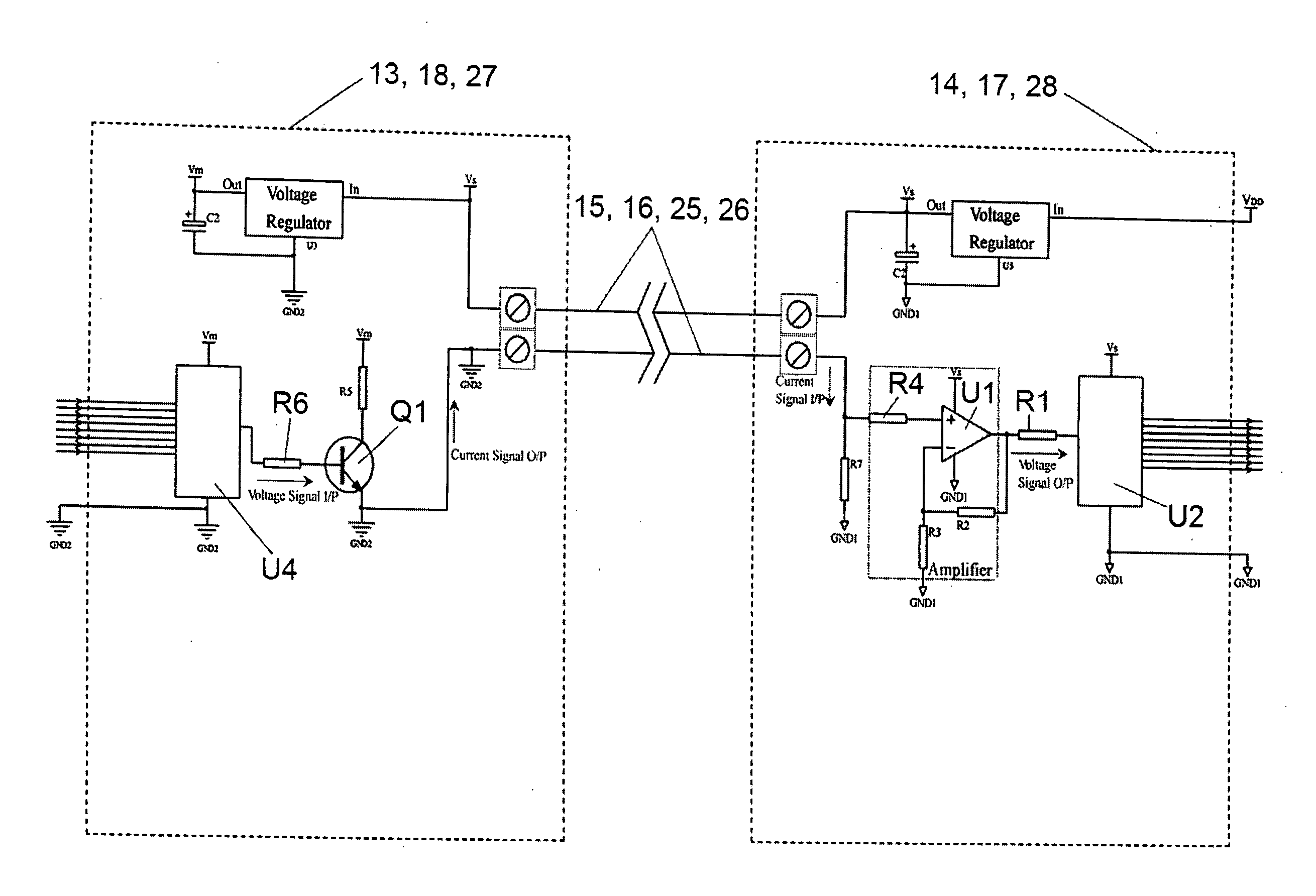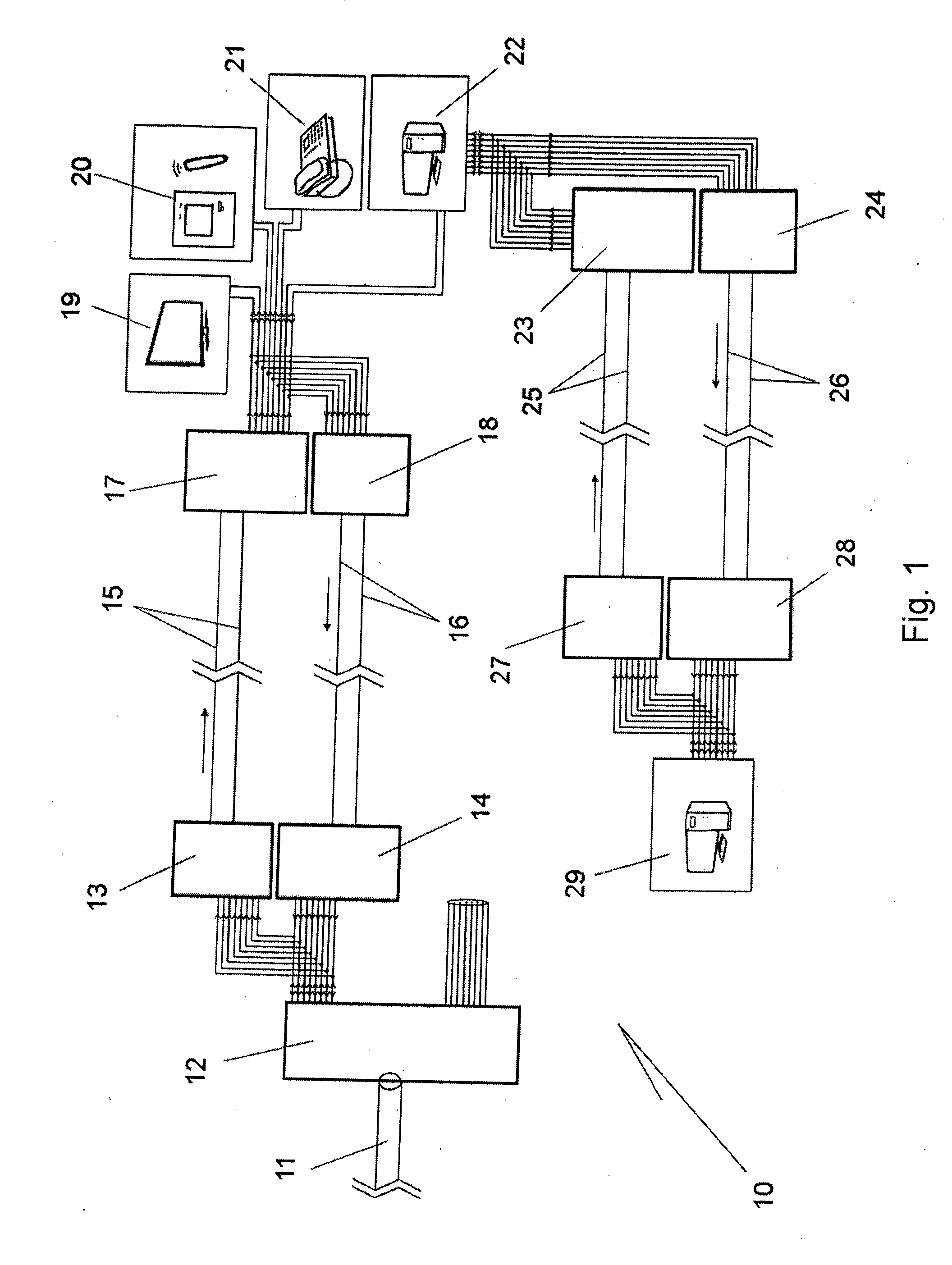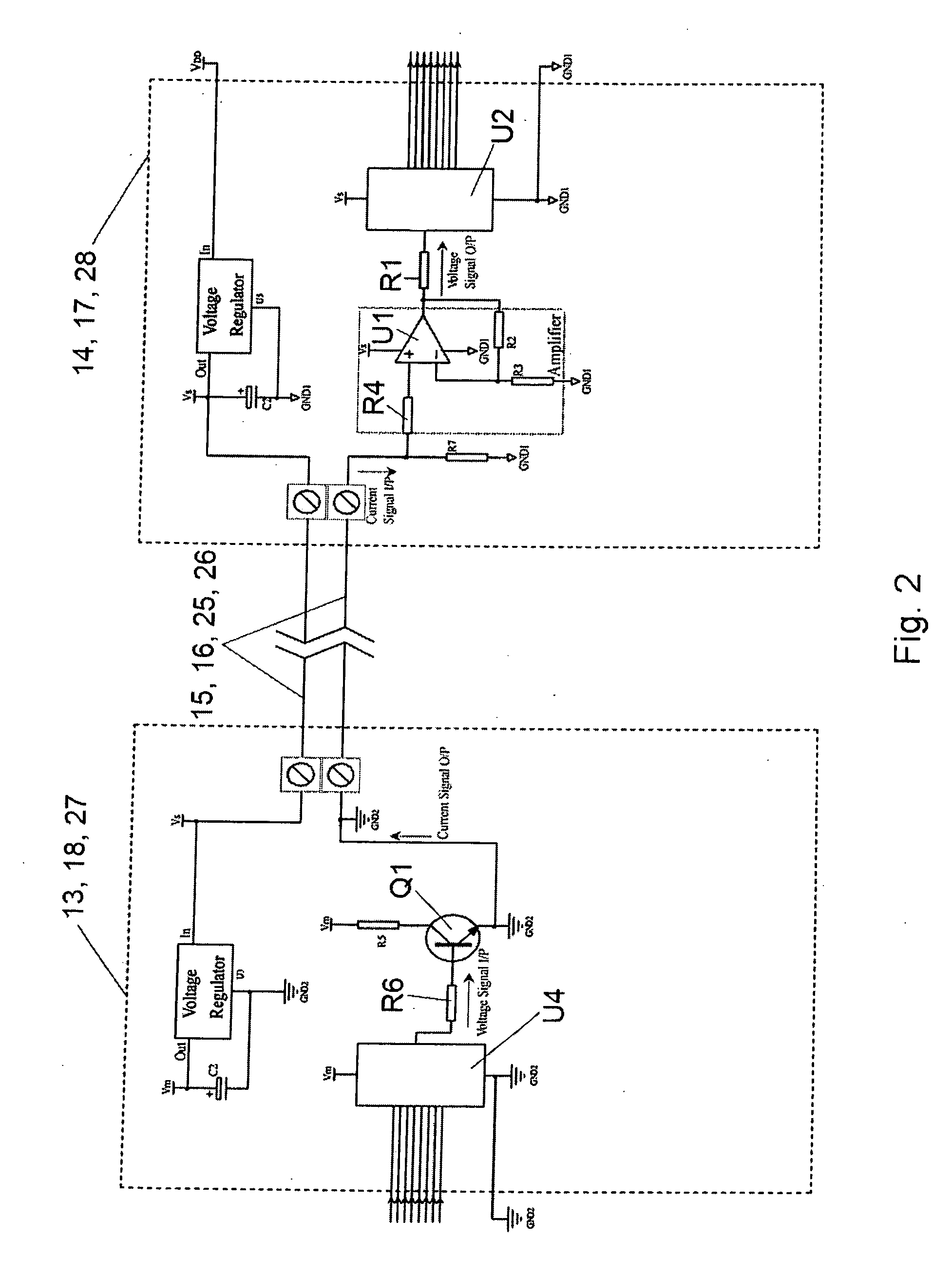High speed electronic data transmission system
a transmission system and high-speed technology, applied in data switching networks, logic circuit coupling/interface arrangements, pulse techniques, etc., can solve the problems of high cost of fibre-optic transceivers, inability to convey electrical power, splicing of fibre-optic cables, etc., and achieve cost-effective high-speed effects
- Summary
- Abstract
- Description
- Claims
- Application Information
AI Technical Summary
Benefits of technology
Problems solved by technology
Method used
Image
Examples
Embodiment Construction
[0023]The block diagram of FIG. 1 depicts high-speed electrical data transmission system 10 communicating data between a fibre-optic public cable network 11 and a home or office local area network including for example a cable television receiver 19, home automation appliances 20, a telephone 21 and a personal computer 22. Of course some of these features could be omitted and others added. In an office local area network, the various components might include a computer server, numerous workstations, photocopiers, fax machines and the like.
[0024]The fibre-optic cable 11 would typically extend under the street or footpath and service numerous offices and / or premises. At each residence or office building for example, there is provided a fibre-optic transceiver 12 which converts optical data signals into electrical data signals.
[0025]Connected electrically to the transceiver 12 is a signal mixer 13 and signal processor 14. A two-conductor cable or “transmission line”15 extends from the ...
PUM
 Login to View More
Login to View More Abstract
Description
Claims
Application Information
 Login to View More
Login to View More - R&D
- Intellectual Property
- Life Sciences
- Materials
- Tech Scout
- Unparalleled Data Quality
- Higher Quality Content
- 60% Fewer Hallucinations
Browse by: Latest US Patents, China's latest patents, Technical Efficacy Thesaurus, Application Domain, Technology Topic, Popular Technical Reports.
© 2025 PatSnap. All rights reserved.Legal|Privacy policy|Modern Slavery Act Transparency Statement|Sitemap|About US| Contact US: help@patsnap.com



